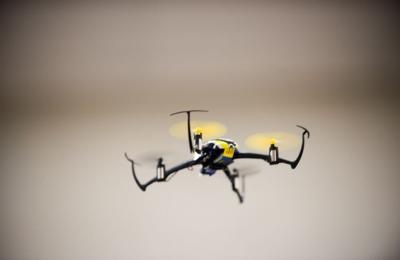Tue, May 12, 2015
'New Technology Poses Risks' That Must Be Addressed, Organization Says
The European Cockpit Association has released a position paper outlining what it says are "key regulatory standards" to ensure that UAVs and manned aircraft can safely coexist in European airspace.

According to the ECA, the technology and abilities of Remotely Piloted Aircraft Systems (RPAS) are changing fast and the commercial demand to integrate the systems in the airspace is enormous. The commercial advantages and possibilities of RPAS seem almost unlimited. And because of decreasing costs - the recreational user will be a new actor in the airspace. But this new technology poses risks that must be on the radar screen of manufacturers, users and regulators. In a new position paper, ECA outlines a number of prerequisites for the safe integration of light RPAS, often referred to as ‘toys’, into Europe’s low level airspace.
“A broad misconception is that small drones are harmless ‘toys’ flying at low level. However, RPAS, even light ones below 1 kg, can cause significant or even catastrophic damage to e.g. helicopters in case of a collision as helicopters have a number of vulnerable, critical components, such as the tail rotor or main rotor head,” says ECA President Dirk Polloczek. “Even below 500 feet there is a lot of air traffic, such as air ambulances, police or fire fighting. The same applies to the airspace next to airports, with a frequent incoming and outgoing traffic. Contrary to scheduled airline flights, most of the low level air traffic (e.g. police or air ambulances) are not predictable in time and place, but all are subjected to strict air operations rules. So should RPAS be.”
At this moment recommendations for worldwide requirements for RPAS are developed for example by the Joint Authorities for Rulemaking on Unmanned Systems (JARUS). In Europe, the National Civil Aviation Authorities are currently responsible for RPAS operations with a weight of 150 kg or less, which leads to diverging rules from state to state. With the ‘Riga Declaration’, signed by the European Commission and various stakeholders, and the European Aviation Safety Agency’s proposed ‘Concept of Operations’ Europe has taken a decisive step to open its skies for RPAS.
This is why ECA has outlined a set of key regulatory standards to ensure safety in lower level airspace when RPAS are integrated with other traffic. Some of these are:
- Introduction of approved automatic detection and avoidance equipment on RPAS;
- Placing responsibility to see and avoid manned aircraft on the pilot of the RPAS;
- Training and licensing of RPAS-pilots in a way that knowledge and skills – but also awareness and airmanship – are on a comparable level as manned aircraft pilots;
- Compulsory registration for all RPAS;
- Informing the public about the dangers of recreational RPAS (DOs and DON’Ts).

“We face an immense challenge to safely integrate RPAS,” says Philip von Schöppenthau, ECA Secretary General. “The Riga Declaration spells out important principles. But we need to be meticulous in our assessment and way forward when it comes to the details. We simply cannot afford to fail. This would be disastrous both for the RPAS industry and for aviation safety. As such we hope that Europe’s future drone rules will be a leading example worldwide when it comes to safety and security.”
(Image from file)
More News
Performance-Based Navigation (PBN) [ICAO] Area navigation based on performance requirements for aircraft operating along an ATS route, on an instrument approach procedure or in a d>[...]
The Airplane Came To Rest Underneath A Set Of Damaged Power Distribution Lines On The Floor Of A Coulee On June 19, 2025, at 1412 mountain daylight time, a Cessna 172K airplane, N7>[...]
Aero Linx: FAA Managers Association (FAAMA) Recognized by the FAA, FAAMA is a professional association dedicated to the promotion of excellence in public service. The Association i>[...]
From 2023 (YouTube Edition): Jet Central Micro-Turbine Engines Impress Founded in the late-1990s, Mexico City-based Jet Central produces a unique and fascinating line of micro-turb>[...]
Also: ANOTHER Illegal Drone, KidVenture Educational Activities, Record Launches, TSA v Shoes The Senate confirmed Bryan Bedford to become the next Administrator of the FAA, in a ne>[...]
 ANN's Daily Aero-Term (07.10.25): Performance-Based Navigation (PBN) [ICAO]
ANN's Daily Aero-Term (07.10.25): Performance-Based Navigation (PBN) [ICAO] NTSB Prelim: Cessna 172
NTSB Prelim: Cessna 172 ANN's Daily Aero-Linx (07.10.25)
ANN's Daily Aero-Linx (07.10.25) Classic Aero-TV: The Big Business of Diminutive Powerplants
Classic Aero-TV: The Big Business of Diminutive Powerplants Airborne 07.11.25: New FAA Bos, New NASA Boss (Kinda), WB57s Over TX
Airborne 07.11.25: New FAA Bos, New NASA Boss (Kinda), WB57s Over TX




